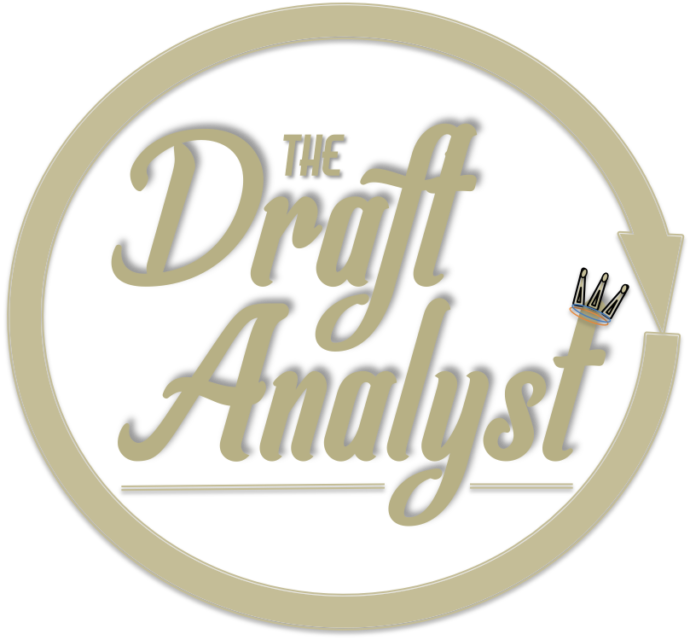 1
1.
C Auston Matthews (ZSC Lions, SUI): A disappointing season in Columbus will yield a silver lining in the form of this outstanding Arizona-born center, who led Team USA to the Bronze Medal at last January’s WJC. Matthews, an NHL-ready playmaker with pro size and leadership skills, will provide the Blue Jackets with some much-desired buzz to say the least. He makes every shift an adventure for opponents, dizzying them into bewilderment as he cuts and shifts with the puck on a string.
 2. LW Patrik Laine (Tappara, Liiga)
2. LW Patrik Laine (Tappara, Liiga): Laine is not only the best pure goal scorer in his draft class, but arguably the most lethal draft-eligble sniper since that guy named Ovechkin back in 2004. A big-bodied winger with a deadly shot, Laine was a catalyst behind Finland’s WJC gold medal, but most impressive is his play in Finland’s elite league, where he’s been the top rookie and shot producer in the circuit.
 3
3.
LHD Jakob Chychrun (Sarnia Sting, OHL): While there’s always the chance the Leafs make it a family affair by linking top prospect William Nylander with his younger brother Alex, it’s borderline suicidal for a franchise bereft for decades of a star defenseman to pass on a stud like Chychrun. He’s fast, strong and highly intelligent, and will give Mike Babcock the perfect option to spearhead his possession-centric attack.
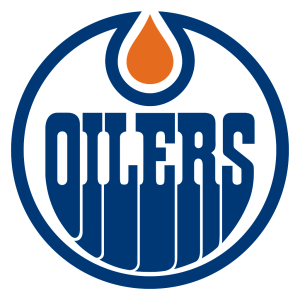 4. RW Alex Nylander (Mississauga Steelheads, OHL)
4. RW Alex Nylander (Mississauga Steelheads, OHL): You’re probably asking, “Not another offensive forward?”. And if you are, it’s completely understandable, especially considering the dynamic Swede would make it seven skill forwards out of Edmonton’s last eight lottery drafts. Still, this particular winger and his array of abilities likely makes all Oilers on the flanks outside of Taylor Hall strikingly redundant. Want more? At the recent CHL Top Prospects Game, he was one of the game’s most accurate passers, and consistently set up plays from across long distances.
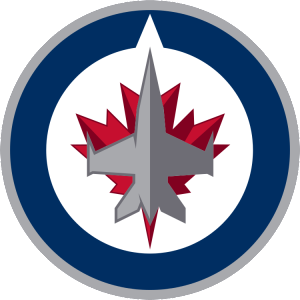 5. RW Jesse Puljujarvi (Oulun Karpat, Liiga)
5. RW Jesse Puljujarvi (Oulun Karpat, Liiga): The Jets have a ton of quality prospects up front, but the team itself has been a huge disappointment, which means some big changes are ahead. Puljujärvi — record-setting WJC notwithstanding — has had an up-and-down year in Finland but still possesses speed and elite, game-breaking potential. If GM Kevin Cheveldayoff is still employed by Draft Day, we’re betting the farm he ignores the need on defense and swings for the upper deck with Puljujarvi.
 6. LW Matt Tkachuk (London Knights, OHL)
6. LW Matt Tkachuk (London Knights, OHL): The Flames could use some help on the wings, and Tkachuk is a great place to start. His pro size when combined with the capacity to think two and three plays ahead makes him a nightmare to play against, and he’d be leading the OHL in assists had he not taken a few weeks off for the WJC’s with Team USA. Tkachuk has a deadly shot, but playing with multiple stars on London has made him more of a playmaker. Scary to think what he’ll do when he combines it all into one menacing package.
 7. C Mike McLeod (Mississauga Steelheads, OHL)
7. C Mike McLeod (Mississauga Steelheads, OHL): The Sedins seem to get better with age, but what’s certain is that they are in fact aging and eventually need to be replaced. And while McLeod’s game is more reminiscent of Ryan Kesler but with far better playmaking ability, he has the kind of top-center upside that is simply too tantalizing to pass up. He’s big, he’s really fast and he can make plays while travelling at a high rate off speed. Finishing his scoring chances with more frequency is something he must improve.
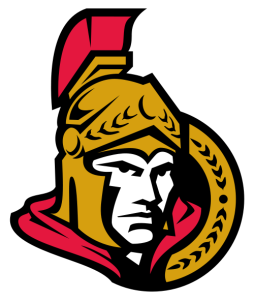 8. RW Julien Gauthier (Val-d’Or Foreurs, QMJHL)
8. RW Julien Gauthier (Val-d’Or Foreurs, QMJHL): Ottawa’s prospect pool could use a top-tier defenseman, but adding the kid who is not too far behind Laine in the goal scoring department will have an equally impactful result on its top scoring lines. Gauthier’s goal-a-game average is far more impressive when you consider he’s not always ensconced on the Foreurs’ top line. He’s a crafty finisher who relies on more than just his hard, accuarte shot to light the lamp.
 9. C Pierre-Luc Dubois (Cape Breton Screaming Eagles, QMJHL)
9. C Pierre-Luc Dubois (Cape Breton Screaming Eagles, QMJHL): You almost have to feel bad for the Habs, who went from Cup contender to lottery team in just a few short weeks. And while Dubois won’t single-handedly soothe the sting from a playoff-less Montreal in springtime, the Toews-like package he’ll bring to the city should make the suffering short lived. Dubois’ size, smarts and vision makes him an ideal candidate for a top-line center.
 10. LW Max Jones (London Knights, OHL)
10. LW Max Jones (London Knights, OHL): The Canes’ semi-rebuild may be going a tad faster than anticipated, so losing out on players like Matthews or the Big Finns for a well-built torpedo like Jones still fits in line with what GM Ron Francis is trying to construct. A tough power forward with deceptive speed and a soft touch, Jones rebounded from a slow start to put up impressive numbers on a stacked Knights team which at times had him as low as the fourth line. But take our word for it — the elite potential he’s displayed the last three months is no fluke. This kid can play.
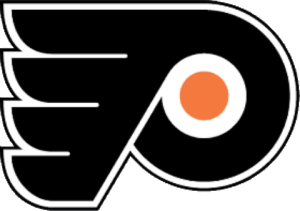 11. C Clayton Keller (U.S. NTDP)
11. C Clayton Keller (U.S. NTDP): A Mitch Marner clone from the center ice position who is almost single handedly carrying a revamped NTDP. Keller, a hard-working puck magnet with speed and sublime offensice skills, averages close to two points per game to challenge Matthews’ single-season scoring record. Keep on eye on him as we wouldn’t be the least bit surprised if he turned out to have the best NHL career of all his draft-eligible peers.
 12. LHD Olli Juolevi (London Knights, OHL)
12. LHD Olli Juolevi (London Knights, OHL): Mature blueliner who is one of the draft’s best offensive defenseman and the perfect option to groom as a power play quarterback. Juolevi compliments London’s forward firepower with accurate breakout passes and an absolute howitzer from the point, and we can’t help but think Coyotes GM Don Maloney sees the young Finn do the same with the arsenal he’s assembling in Arizona.
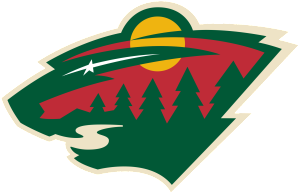 13. C Tyson Jost (Penticton Vees, BCHL)
13. C Tyson Jost (Penticton Vees, BCHL): We admire Jost’s commitment to education, as he spurned the CHL (in his draft year, no less) for the greener pastures of academia and the University of North Dakota. And while the quality of competition in the BCHL is a step below Canadian major junior, Jost proved he belonged with a strong Hlinka, ouplaying several of his CHL-committed teammates. He’s a crafty playmaker with a hunter’s mindset who can slice through a zone with rapier-like quickness, which is an area the Wild have had trouble with in recent years.
 14
14.
LHD Mikhail Sergachyov (Windsor Spitfires, OHL): Russian import who is strong on his feet and owns a powerful stride with deceptive quickness. Sergachyov has played a significant role in Windsor’s resurgence, manning the special teams units and logging a ton of ice on its top pairing. We would most certainly classify Sergachyov as both a shut-down defender and an excellent scoring option thanks to a heavy shot and quick enough feet to get into open shooting lanes. This kid approaches the game with a great attitude, and does so while keeping it rugged and rough.
 15. C Logan Brown (Windsor Spitfires, OHL)
15. C Logan Brown (Windsor Spitfires, OHL): Watching the Spitfires has sure been a treat, and a lot of it has to do with their top-line center. Brown – all 6’6 of him – has a blistering shot, but he’s been pass-first most of this season. We often wonder how he’d be viewed had he played in a loaded program like in London or Erie, but truth be told, he’s had games where he was unnoticeable. Brown moves extremely well, and his powerful, long stride makes him a tough out for any defenseman in a one-on-one situation.
 16
16.
C German Rubtsov (Russia U18, MHL): We stand by our statement from way back in the early fall that Rubtsov is the best two-way forward in the draft, and we think he’ll be in North America sooner than later. Rubtsov is a power center to say the least: he’s impossible to move off the puck and even tougher to bypass when he wants to take it away. He put forth an impressive performance at the World Junior “A” Challenge in December, but it’s scary to think he’s been even better at other competitions.
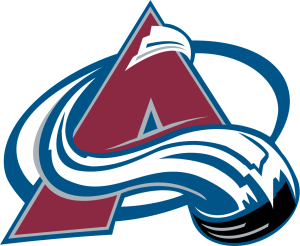 17. RHD Dante Fabbro (Penticton Vees, BCHL)
17. RHD Dante Fabbro (Penticton Vees, BCHL): Another college-bound Canadian who plays a smooth and fluid two-way game. Fabbro is the draft’s top right-handed defenseman, so that may come into play is a certain organization feels its the kind of hole they would like to fill. Regardless, the team that draft’s Fabbro will be in for a treat — he’s an outstanding in-game manager, with an acute grasp of knowing when to slow the pace or push forward on the attack. Fabbro’s mental agility is equally as impressive as the physical, and will likely flourish under David Quinn’s system at Boston University.
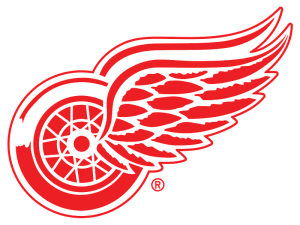 18. LW Kieffer Bellows (U.S. NTDP)
18. LW Kieffer Bellows (U.S. NTDP): The Red Wings don’t necessarily need another goal-scoring winger, but the draft order puts them in the likely position to go BPA with a bunch of wingers in the grouping. Bellows is the NTDP’s star winger who has filled the net with regularity at every level thanks to pinpoint accuracy and a quick release. Don’t buy into the narrative that a strong ox like Bellows is merely the beneficiary of Keller’s selflessness – both are low maintenance and can create their own scoring chances.
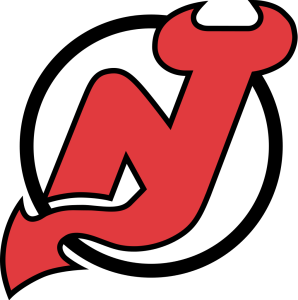 19. LW Luke Kunin (Wisconsin Badgers, Big-10)
19. LW Luke Kunin (Wisconsin Badgers, Big-10): Another product of the NTDP whose freshman year in Madison has gone quite well for what’s turned out to be a significant rebuild. Kunin is a sharpshooter with expert accuracy, ranking near the top of freshman goal scorers. He’s very quick and is tough to knock off the puck, and if there’s a gap in the enemy line, there’s a good bet this St. Louis-area native will find and exploit it.
 20. LHD Libor Hajek (Saskatoon Blades, WHL)
20. LHD Libor Hajek (Saskatoon Blades, WHL): Scouts and analysts tend to be overly cliche with their player assessments, but there’s no better way to describe Hajek other than calling him one of the draft’s better two-way defensemen. You won’t find many weaknesses in his game, and the idea that he plays guarded is hogwash. The speedy Hajek plays at a high level in either zone, and his decision making with or without the puck is advanced for a teenage defender. To say he has top-pairing potential is understating how gifted a blueliner he truly is.
 *21
*21.
C Rasmus Asplund (Farjestad, SHL): Some might say Asplund is similar to Bruins 2015 second rounder (and fellow Swede) Jakob Forsbacka-Karlsson – Both are centers and play a discipline two-way game, but that shouldn’t prevent the Bruins from taking another pivot with significantly higher upside. Asplund has carried his fine play as Team Sweden’s top center from the WJC into the second half with Farjestadn which uses his in all situations.
 22
22.
RHD Charlie McAvoy (Boston University, HE): It’s not a banner year for New England-area prospects, but the Bruins go local at least once a draft regardless. With an extra pick in the top-30, the Long Island-raised McAvoy makes the most sense. Aggressive and assertive are two words which describe him best, and he’s been impressive handling important minutes for the Terriers after losing captain Matt Grzelcyk to injury. Teams know McAvoy is dangerous with or without the puck, yet he still finds ways to beat them.
 23
23.
C Sam Steel (Regina Pats, WHL): Quick and decisive seem to be the prospect requirements for Lightning GM Steve Yzerman, who has a penchant for dealing high picks to either move up or down. Steel is fast and creative, leading the thin yet rebuilding Pats in most offensive categories. We like Steel’s maturity and how he’s dealt with personal tragedy, and he’s the perfect player to develop into what the soon-to-be-traded Jonathan Drouin was supposed to be.
 *24
*24.
RW Taylor Raddysh (Erie Otters, OHL): The Coyotes don’t necessarily need help on the flanks, but what they lack is a power forward who can not only finish, but understand his role beyond scoring goals. So who better than the teammate of their 2015 top pick Dylan Strome, who plays with Raddysh for the Erie Otters. There’s a good chance Alex DeBrincat may be another option with their second first round pick, but the 6’2 Raddysh’s path to the NHL is likely quicker.
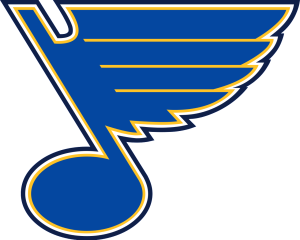 25. LW Tyler Benson (Vancouver Giants, WHL)
25. LW Tyler Benson (Vancouver Giants, WHL): Injuries have hurt this gifted forward’s ranking, probably since Vancouver has been real hush-hush ever since Benson had offseason surgery to remove a cyst from his lower back. He responded with two straight months of dominance, only to hit the shelf with an apparent groin injury. Health woes be damned, however, as the Blues will be getting lottery quality in the depths of the first round. Benson has tremendous balance and a great shot, and the time off will help him in the long run.
 *26
*26.
LW Simon Stransky (Prince Albert Raiders, WHL): There isn’t a definitive answer as to why this playmaking winger continues to get mixed reviews. But each time we tracked him, we come away impressed with his vision; specifically his ability to control the puck at length while in motion so he can draw defenders away from his teammates. Stransky is an above-average skater, but he makes smart decisions off the rush and rarely telegraphs his intent. He’s pure offense and the Hurricanes can use some.
 27
27.
LHD Chad Krys (U.S. NTDP): Connecticut-born defenseman who like most NTDP blueliners has to limit the amount of offense he can provide due to skill in depth on the forward lines. Krys is also committed to Boston University for next season, and played a support role on Team USA during its bronze medal run at the recent WJC’s. He’s not the biggest or the baddest defender, but he has shown the ability to play smart and do the little things necessary to win. He’s mobile and can run the power play, but at this stage he’s still raw and needs to learn the nuances of the position.
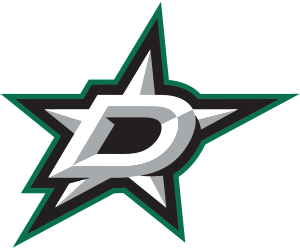 28
28.
C Dillon Dube (Kelowna Rockets, WHL): Dallas began collecting high-end offensive players a few seasons ago, but it’s time they fill an organizational need and draft a high-end two-way forward who produces in all three zones. Dube is fast and works hard every shift, but he has leadership qualities and a reliability factor that augment some serious skill. But don’t label him a role player — he sees the ice extremely well and has very good playmaking abilities.
 29
29.
LHD Samuel Girard (Shawinigan Cataractes, QMJHL): Who better than to mentor this exceptionally-gifted on-ice general than the guy who’s the modern-day standard. No, we’re not saying Girard is the next Duncan Keith. But the former certainly runs a power play is a similar manner, albeit with more speed but an average shot from the point. We strongly advise pairing Girard with a reliable stay-at-home type, which Shawinigan has done off and on with its top pairing.
 30. C Will Bitten (Flint Firebirds, OHL)
30. C Will Bitten (Flint Firebirds, OHL): Washington has paralleled it’s NHL success with an underrated development program, so what better way to continue the trend with this sneaky-skilled center who bears the brunt of top matchups but still finds a way to produce. Bitten plays a lot bigger than his 5’11 frame, and his two-way smarts and blazing speed compliment a strong playmaking acumen.
*Boston owns San Jose’s 2016 1st round pick from the Martin Jones trade.
*Pittsburgh keeps its 2016 1st round pick and transfers its 2017 1st round pick to the Toronto Maple Leafs if they do not qualify for the playoffs. If the Penguins make the playoffs, they must surrender the pick to the Maple Leafs from a condition in the Phil Kessel trade.
*Carolina owns Los Angeles’s’ 2016 1st round pick from the Andrej Sekera trade.
*Arizona owns the New York Rangers’ 2016 1st round pick from the Keith Yandle trade. The pick is lottery protected, so if the Rangers do not qualify for the 2016 Stanley Cup Playoffs, the Rangers would keep their 2016 first round pick, and the Coyotes will receive the Rangers’ 2017 1st round pick (unprotected).
 19. LW Luke Kunin (Wisconsin Badgers, Big-10): Another product of the NTDP whose freshman year in Madison has gone quite well for what’s turned out to be a significant rebuild. Kunin is a sharpshooter with expert accuracy, ranking near the top of freshman goal scorers. He’s very quick and is tough to knock off the puck, and if there’s a gap in the enemy line, there’s a good bet this St. Louis-area native will find and exploit it.
19. LW Luke Kunin (Wisconsin Badgers, Big-10): Another product of the NTDP whose freshman year in Madison has gone quite well for what’s turned out to be a significant rebuild. Kunin is a sharpshooter with expert accuracy, ranking near the top of freshman goal scorers. He’s very quick and is tough to knock off the puck, and if there’s a gap in the enemy line, there’s a good bet this St. Louis-area native will find and exploit it. *21. C Rasmus Asplund (Farjestad, SHL): Some might say Asplund is similar to Bruins 2015 second rounder (and fellow Swede) Jakob Forsbacka-Karlsson – Both are centers and play a discipline two-way game, but that shouldn’t prevent the Bruins from taking another pivot with significantly higher upside. Asplund has carried his fine play as Team Sweden’s top center from the WJC into the second half with Farjestadn which uses his in all situations.
*21. C Rasmus Asplund (Farjestad, SHL): Some might say Asplund is similar to Bruins 2015 second rounder (and fellow Swede) Jakob Forsbacka-Karlsson – Both are centers and play a discipline two-way game, but that shouldn’t prevent the Bruins from taking another pivot with significantly higher upside. Asplund has carried his fine play as Team Sweden’s top center from the WJC into the second half with Farjestadn which uses his in all situations. 22. RHD Charlie McAvoy (Boston University, HE): It’s not a banner year for New England-area prospects, but the Bruins go local at least once a draft regardless. With an extra pick in the top-30, the Long Island-raised McAvoy makes the most sense. Aggressive and assertive are two words which describe him best, and he’s been impressive handling important minutes for the Terriers after losing captain Matt Grzelcyk to injury. Teams know McAvoy is dangerous with or without the puck, yet he still finds ways to beat them.
22. RHD Charlie McAvoy (Boston University, HE): It’s not a banner year for New England-area prospects, but the Bruins go local at least once a draft regardless. With an extra pick in the top-30, the Long Island-raised McAvoy makes the most sense. Aggressive and assertive are two words which describe him best, and he’s been impressive handling important minutes for the Terriers after losing captain Matt Grzelcyk to injury. Teams know McAvoy is dangerous with or without the puck, yet he still finds ways to beat them. 23. C Sam Steel (Regina Pats, WHL): Quick and decisive seem to be the prospect requirements for Lightning GM Steve Yzerman, who has a penchant for dealing high picks to either move up or down. Steel is fast and creative, leading the thin yet rebuilding Pats in most offensive categories. We like Steel’s maturity and how he’s dealt with personal tragedy, and he’s the perfect player to develop into what the soon-to-be-traded Jonathan Drouin was supposed to be.
23. C Sam Steel (Regina Pats, WHL): Quick and decisive seem to be the prospect requirements for Lightning GM Steve Yzerman, who has a penchant for dealing high picks to either move up or down. Steel is fast and creative, leading the thin yet rebuilding Pats in most offensive categories. We like Steel’s maturity and how he’s dealt with personal tragedy, and he’s the perfect player to develop into what the soon-to-be-traded Jonathan Drouin was supposed to be. *24. RW Taylor Raddysh (Erie Otters, OHL): The Coyotes don’t necessarily need help on the flanks, but what they lack is a power forward who can not only finish, but understand his role beyond scoring goals. So who better than the teammate of their 2015 top pick Dylan Strome, who plays with Raddysh for the Erie Otters. There’s a good chance Alex DeBrincat may be another option with their second first round pick, but the 6’2 Raddysh’s path to the NHL is likely quicker.
*24. RW Taylor Raddysh (Erie Otters, OHL): The Coyotes don’t necessarily need help on the flanks, but what they lack is a power forward who can not only finish, but understand his role beyond scoring goals. So who better than the teammate of their 2015 top pick Dylan Strome, who plays with Raddysh for the Erie Otters. There’s a good chance Alex DeBrincat may be another option with their second first round pick, but the 6’2 Raddysh’s path to the NHL is likely quicker. 27. LHD Chad Krys (U.S. NTDP): Connecticut-born defenseman who like most NTDP blueliners has to limit the amount of offense he can provide due to skill in depth on the forward lines. Krys is also committed to Boston University for next season, and played a support role on Team USA during its bronze medal run at the recent WJC’s. He’s not the biggest or the baddest defender, but he has shown the ability to play smart and do the little things necessary to win. He’s mobile and can run the power play, but at this stage he’s still raw and needs to learn the nuances of the position.
27. LHD Chad Krys (U.S. NTDP): Connecticut-born defenseman who like most NTDP blueliners has to limit the amount of offense he can provide due to skill in depth on the forward lines. Krys is also committed to Boston University for next season, and played a support role on Team USA during its bronze medal run at the recent WJC’s. He’s not the biggest or the baddest defender, but he has shown the ability to play smart and do the little things necessary to win. He’s mobile and can run the power play, but at this stage he’s still raw and needs to learn the nuances of the position. 29. LHD Samuel Girard (Shawinigan Cataractes, QMJHL): Who better than to mentor this exceptionally-gifted on-ice general than the guy who’s the modern-day standard. No, we’re not saying Girard is the next Duncan Keith. But the former certainly runs a power play is a similar manner, albeit with more speed but an average shot from the point. We strongly advise pairing Girard with a reliable stay-at-home type, which Shawinigan has done off and on with its top pairing.
29. LHD Samuel Girard (Shawinigan Cataractes, QMJHL): Who better than to mentor this exceptionally-gifted on-ice general than the guy who’s the modern-day standard. No, we’re not saying Girard is the next Duncan Keith. But the former certainly runs a power play is a similar manner, albeit with more speed but an average shot from the point. We strongly advise pairing Girard with a reliable stay-at-home type, which Shawinigan has done off and on with its top pairing.